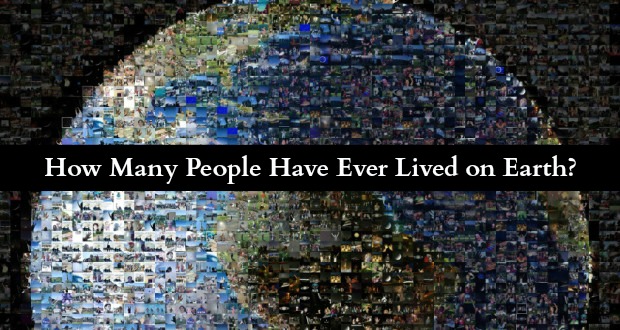
You’ve probably heard the bold and ridiculously untrue assertion that a large percentage of the people who have ever lived are alive right now. If true, that would be an astonishing piece of trivia, but as the late Carl Sagan would say, extraordinary claims require extraordinary evidence. As you can imagine, that’s a bit easier said than done here.
Like individually counting all of the stars in the universe — or each grain of sand on every beach on Earth, if you’d prefer — it’s impossible (not to mention completely absurd) to expect to derive an exact number. We can, however, take a look at a few related factors and come up with a decent estimate.Still yet, there are many things that complicate the matter. For example, we have to determine exactly where the line between homosapiens and our closest ancestors is. Taking into consideration the number of minute evolutionary changes they underwent before they evolved into humans, as we know them today, makes that line blurry (at best).
WATCH: Distilled Demographics: How Many People Have Ever Lived on Earth?

In case you decide to skip the video, the most reliable number comes from the Population Reference Bureau, which estimates that some 108 billion people have lived and died. For some insight:
“Any estimate of the total number of people who have ever been born will depend basically on two factors: the length of time humans are thought to have been on Earth and the average size of the human population at different periods. At the dawn of agriculture, about 8000 B.C., the population of the world was somewhere on the order of 5 million. (Very rough figures are given in the table; these are averages of an estimate of ranges given by the United Nations and other sources.) The slow growth of population over the 8,000-year period, from an estimated 5 million to 300 million in 1 A.D., results in a very low growth rate—only 0.0512 percent per year. It is difficult to come up with an average world population size over this period. In all likelihood, human populations in different regions grew or declined in response to famines, the vagaries of animal herds, hostilities, and changing weather and climatic conditions.”

“By 1 A.D., the world may have held about 300 million people. One estimate of the population of the Roman Empire, from Spain to Asia Minor, in 14 A.D., is 45 million. However, other historians set the figure twice as high, suggesting how imprecise population estimates of early historical periods can be. By 1650, world population rose to about 500 million, not a large increase over the 1 A.D. estimate. The average annual rate of growth was actually lower from 1 A.D. to 1650 than the rate suggested above for the 8000 B.C. to 1 A.D. period.”
“One reason for this abnormally slow growth was the Black Death. This dreaded plague was not limited to 14th-century Europe. The epidemic may have begun about 542 A.D. in western Asia, spreading from there. It is believed that half the Byzantine Empire was destroyed in the 6th century, a total of 100 million deaths. Such large fluctuations in population size over long periods greatly compound the difficulty of estimating the number of people who have ever lived. By 1800, however, world population had passed the 1 billion mark, and it has continued to grow since then to the current 7 billion.”
“Guesstimating the number of people ever born, then, requires selecting population sizes for different points from antiquity to the present and applying assumed birth rates to each period. We start at the very, very beginning—with just two people (a minimalist approach!). One complicating factor is the pattern of population growth. Did it rise to some level and then fluctuate wildly in response to famines and changes in climate? Or did it grow at a constant rate from one point to another? We cannot know the answers to these questions, although paleontologists have produced a variety of theories. For the purposes of this exercise, it was assumed that a constant growth rate applied to each period up to modern times. Birth rates were set at 80 per 1,000 per year through 1 A.D. and at 60 per 1,000 from 2 A.D. to 1750. Rates then declined to the low 30s by the modern period. This semi-scientific approach yields an estimate of about 108 billion births since the dawn of the human race.”
“Clearly, the period 8000 B.C. to 1 A.D. is key to the magnitude of our number, but, unfortunately, little is known about that era. Some readers may disagree with some aspects—or perhaps nearly all aspects—of the table, but at least it offers one approach to this elusive issue. If we were to make any guess at all, it might be that our method underestimates the number of births to some degree. The assumption of constant population growth in the earlier period may underestimate the average population size at the time. And, of course, pushing the date of humanity’s arrival on the planet before 50,000 B.C. would also raise the number, although perhaps not by terribly much. So, our estimate here is that about 6.5 percent of all people ever born are alive today.”
“That’s actually a fairly large percentage when you think about it.”
[Reference: Population Reference Bureau]
In more math-related goodness, learn how many molecules we inhale that were once exhaled by Julius Caesar here.